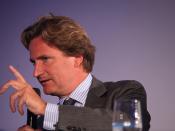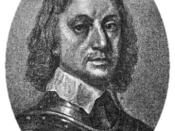In this essay I aim to find out how far the creation of a New Model Army contributed to the defeat of the Royalists. Firstly it is noticeable simply from the title question that there must have been other factors involved, the New Model Army being just one of them. I am aiming to find and evaluate the significance of these factors.
Britain was not psychologically prepared for war, but was even less prepared militarily because of a long period of peace. Because of this the population was largely without military knowledge and experience. However there were local militia units who served within their county. The local militias were simply defence units and were truly untrained in war, they were once described as 'a dark, stomping stinking mass.' They grew in size as they marched towards the battlefield as civilians joined them. Not all the militias were as untrained as this, some united with trained troops to fight off opposing armies.
The self-denying ordinance meant that the political and military forces were kept separate. This meant each could focus more on achieving their goal in the way they did best, and left so left room for a private army created on the basis of skill not status.
The New Model Army was created in February 1645 by Parliament as it felt that a professional army would be more successful against the king's army. It was a military unit that was to transform the Civil War. The Army was formed from the existing Parliamentarian armies. Fairfax commanded it and its cavalry was lead by Oliver Cromwell. Initially the army had some problems in which many other armies also faced, these were shortage of money to pay soldiers, disease and desertation, and this meant that they had to rely on conscription especially...

![[The Voisin brothers, French aviation pioneers. Gabriel Voisin (1880-1973), on the left, and Charles Voisin (1882-1912), on the right] (LOC)](https://s.writework.com/uploads/5/50179/voisin-brothers-french-aviation-pioneers-gabriel-voisin-188-thumb.jpg)
